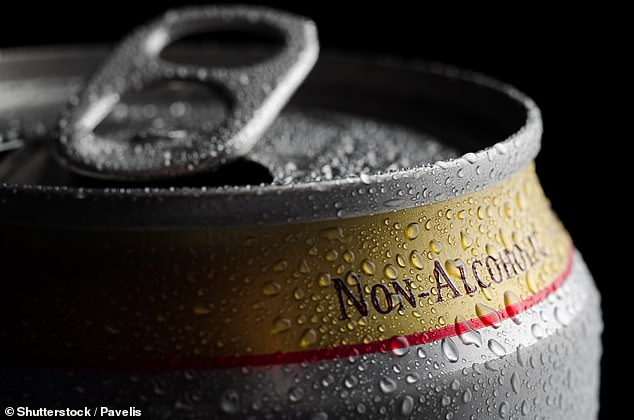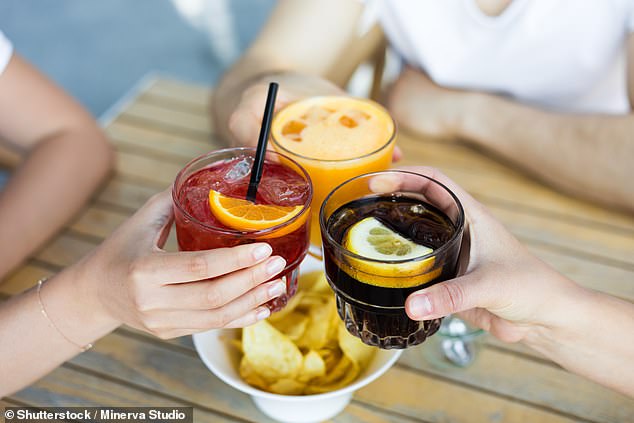One in three drinkers are turning away from alcohol as Brits raise a glass to ‘alcohol-free’ versions of their favourite tipple
Research shows that one in three drinkers raises a glass to a non-alcoholic version of their favourite drink.
Non-alcoholic spirits, wine and beer have become hugely popular over the past 12 months as consumers seek healthier options.
According to experts, young people and the middle class are increasingly using them to moderate their alcohol consumption, often alternating between the high-alcohol versions.
According to the annual survey by the charity Drinkaware, 31 per cent of people have been teetotallers at some point, up from 25 per cent last year.
But the biggest jump is in the upper social classes, whose consumption has more than doubled since 2018, from 18 percent to 38 percent.
One in three drinkers raise a glass to ‘non-alcoholic’ versions of their favourite tipple, research shows (stock photo)

Non-alcoholic spirits, wine and beer have become hugely popular over the past 12 months as consumers look for healthier drinking options (stock photo)
Low-alcohol variants are also increasingly being used to cut down: 36 percent of drinkers say they use them.
Men have also closed the gap with women, with 31 and 32 percent respectively now using non-alcoholic substitutes, compared to 15 and 21 percent six years ago.
Many people said they preferred these drinks to soda or a cup of tea, ‘because they look, taste and feel like alcohol’. This made them feel more sociable and they were less likely to be asked why they weren’t drinking.
Millennials are the most likely to give up alcohol, with one in five 18- to 34-year-olds now teetotal, compared with 13 percent of 35- to 54-year-olds and 14 percent of those over 55.
Karen Tyrell, Chief Executive of Drinkaware, said: ‘It’s really encouraging to see more and more people moderating their alcohol consumption, especially among young people.

According to experts, middle-class and young drinkers are increasingly turning to non-alcoholic alternatives for moderate alcohol consumption, often switching between high-alcohol versions
‘The rise of low- and no-alcohol beverages and their increasing popularity makes it much easier for people to moderate their alcohol consumption.
However, last year more than 10,000 people died from alcohol-related diseases, the highest number ever. Understanding how much you drink can help prevent your health from being seriously compromised.’
Taking alcohol-free days remains the most popular way to moderate your drinking, rising from 67 percent in 2023 to 71 percent in 2024, according to a survey of more than 5,000 adults in the UK.
But around eight million people drink potentially dangerous amounts of alcohol, exceeding the Chief Medical Officer’s guidelines of a maximum of 14 units a week.
About 28 percent said they were concerned about someone else’s drinking in the past 12 months, up from 26 percent a year earlier.
Despite this, only 27 per cent of adults in the UK have been asked to complete an alcohol test such as the Drinkaware Drinking Check.
